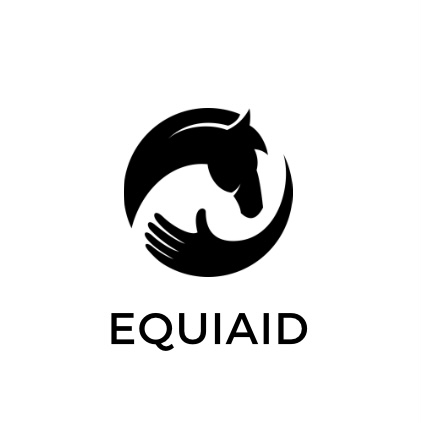Have you ever wondered how to tell if your horse is in pain? As horse owners, it’s essential to be able to recognize the signs that our equine companions may be experiencing discomfort or suffering. Despite their size and strength, horses are prey animals and have evolved to hide signs of weakness or pain to avoid being targeted by predators. This means that they may not always show obvious symptoms of discomfort, making it crucial for us to pay close attention to their behavior and body language to detect any potential issues. In this blog post, we’ll explore some of the most common signs of pain in horses and discuss how to best care for and support our equine friends when they are experiencing discomfort.
Some common signs that your horse may be in pain include:
襤Changes in appetite:
Horses who are experiencing pain may become picky eaters or may refuse to eat altogether.
Changes in behavior:
Pain can make horses agitated, nervous, and irritable. You may notice that your horse is more difficult to handle or becomes more vocal than usual.
Changes in movement:
Horses may move differently when they are in pain. They may appear stiff, reluctant to move, or may move in an abnormal way.
留♀️Changes in posture:
Horses in pain may hold their head or body in a certain way to try to alleviate discomfort.
Changes in facial expressions:
Pay close attention to your horse’s face. Signs of pain may include a tense jaw, wrinkles around the eyes, or flared nostrils.
If you notice any of these signs in your horse, it’s important to take action to address the issue. Ignoring pain can lead to further complications and may cause your horse to become more difficult to manage.
There are many potential causes of pain in horses, including injuries, illness, dental issues, and more. If you suspect that your horse may be in pain, it’s important to consult with a veterinarian to determine the underlying cause and to develop an appropriate treatment plan.
Research has shown that horses are very good at hiding signs of pain. In a study published in the Journal of Veterinary Behavior, researchers found that horses who were experiencing pain due to a hoof abscess or laminitis showed fewer signs of pain when they were in the presence of their owners compared to when they were alone. This underscores the importance of paying close attention to your horse’s behavior and body language in order to detect any potential issues.

One day, one of our client ,Sarah. She went to the barn to check on her horse, Sparky. She noticed that he wasn’t eating his hay and seemed lethargic. When she tried to lead him out of his stall, he resisted and seemed reluctant to move. Sarah immediately suspected that something was wrong and called her veterinarian.
After a thorough examination, the vet determined that Sparky had a minor leg injury that was causing him pain. With proper treatment and pain management, Sparky was able to recover quickly and was back to his old self in no time.
Sarah was grateful that she had recognized the signs of pain in Sparky early on and had taken action to address the issue. She learned that paying close attention to her horse’s behavior and body language was key to detecting any potential issues and keeping Sparky healthy and happy.
In conclusion, it’s important for horse owners to be aware of the signs of pain in horses and to take action to address any issues. By paying close attention to your horse’s behavior and body language, consulting with a veterinarian, and providing appropriate pain management, you can help ensure that your horse stays healthy and comfortable for years to come.
Watch this video from Dr.Sue
The 24 Behaviors of the Ridden Horse in Pain: Shifting the Paradigm of How We See Lameness
Research papers:
Leach, D. H., et al. “Assessment of Pain in Horses.” The Veterinary Journal, vol. 206, no. 1, 2015, pp. 14–22. https://www.sciencedirect.com/science/article/pii/S1090023315000091
Gleerup, K. B., et al. “Quantitative Methods for Assessment of Pain in Horses.” Equine Veterinary Journal, vol. 44, no. 6, 2012, pp. 725–731. https://beva.onlinelibrary.wiley.com/doi/full/10.1111/j.2042-3306.2012.00576.x
Dalla Costa, E., et al. “Development of the Horse Grimace Scale (HGS) as a Pain Assessment Tool in Horses Undergoing Routine Castration.” PLoS ONE, vol. 10, no. 6, 2015, e0124379. https://journals.plos.org/plosone/article?id=10.1371/journal.pone.0124379

Recommended books:
The Horse’s Pain-Free Back and Saddle-Fit: Ensure Soundness and Comfort with Back Analysis and Correct Use of Saddles and Pads” by Joyce Harman:
https://www.amazon.com/Horses-Pain-Free-Back-Saddle-Fit-Analysis/dp/1570763327/
Understanding Equine Lameness: Your Guide to Horse Health Care and Management” by Les Sellnow:
https://www.amazon.com/Understanding-Equine-Lameness-Health-Management/dp/0764142951
“Horse Anatomy for Performance: A Practical Guide to Training, Riding and Horse Care” by Gillian Higgins:https://www.amazon.com/Horse-Anatomy-Performance-Practical-Training/dp/0851319053
“The Horse’s Muscles in Motion” by Sara Wyche: https://www.amazon.com/Horses-Muscles-Motion-Sara-Wyche/dp/1446300996
“The Horse Conformation Handbook” by Heather Smith Thomas https://www.amazon.com/Horse-Conformation-Handbook-Heather-Thomas/dp/158017558X
“Horse Owner’s Veterinary Handbook” by Thomas Gore, Paula Gore, and James M. Giffin https://www.amazon.com/Horse-Owners-Veterinary-Handbook-Gore/dp/0470126792
“The Equid Ethogram: A Practical Field Guide to Horse Behaviour” by Sue Mcdonnell https://www.amazon.com/Equid-Ethogram-Practical-Horse-Behaviour/dp/0692812695

